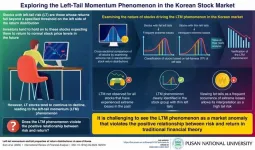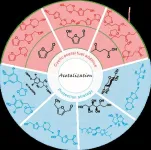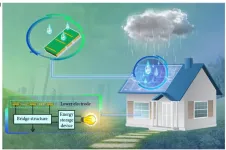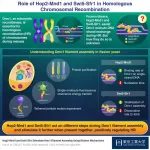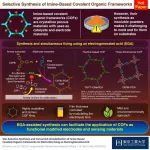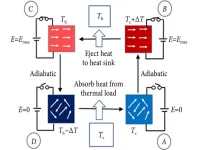(Press-News.org) In our modern era of larger, more destructive, and longer-lasting fires—called the Pyrocene—plants and animals are evolving quickly to survive. By synthesizing the wide body of research about rapid animal evolution in response to fire in a review publishing in Trends in Ecology & Evolution on July 19, a multidisciplinary team of ecology experts hopes to leverage what we already know to help foster evolution-informed conservation plans. In this way, they suggest, we can try to harness the ways in which fire impacts animals to protect vulnerable species—working with evolution instead of against it.
In response to climate change and changes in land use, fire regimes—or the typical characteristics of fire in a particular place, including severity, size, shape, and frequency—are changing quickly. “Every inch of terrestrial earth containing vegetation and an ignition source has an associated fire regime, and in many ecosystems, fire is the major agent of landscape change,” says lead author Gavin Jones (@ecologyofgavin), an ecologist for the USDA Forest Service.
As a result, the authors write, vegetation patterns are changing, habitats are morphing, and species are facing “large-scale mortality and dispersal events,” meaning that fires are killing off large numbers of individuals at a time and driving animals into new regions, sometimes separating the members of one population into different groups.
While research in the field showcases many examples of fire-driven animal evolution that have already taken place, animal evolution in response to fire is generally less well understood than the evolution undergone by plants. Jones and his team wondered what there was to learn from compiling what we know about how fires impact animals. To find out, the authors reviewed nearly 100 papers to identify examples of animal evolution in response to fire—and to analyze and categorize the different ways in which this evolution can take place.
“There is such an incredibly wide range of animal adaptations to fire. Evolution is happening—and will continue to happen—right in front of our eyes,” says Jones. “One of my favorite examples is the Melanophila beetles, which have evolved infrared sensory pits that allow them to sense forest fires and safely engage in reproductive behaviors near active fires.”
In addition to the Melanophila beetles, Jones and his colleagues also reference several other observed species changes in response to fire, which vary substantially. The Australian frilled lizard, for example, hides out in trees to escape fires, which is a behavioral adaptation. Other species, like a bird called the Temminck’s courser which lays eggs the color of recently burnt ground, have evolved by changing their basic biological characteristics.
“I had a great time reviewing the literature on animal adaptations to fire, and I was surprised and excited to see the depth of that literature,” says Jones. “There are lots of incredible researchers working in this area.”
Understanding the variation in how animal species are evolving is important, assert the authors, because it will enable more effective conservation efforts. For example, in some cases, artificially introducing fire into an ecosystem may help make species more resilient. In one case cited by the authors, conservationists are considering using fire to help separated populations of Boisduval’s blue butterfly in Yosemite National Park, California become more genetically connected, which could allow them to better reproduce and increase their population numbers. While interventions like these may be effective for some species, they might not work well for all animals.
“We must acknowledge that fire is not just a process that influenced evolution long ago...,” write the authors. “We see a need to incorporate evolutionary thinking into approaches for conserving populations under changing fire regimes, including detecting symptoms of fire naivety and identifying potential fire savvy-traits that could be leveraged for conservation. Doing so will allow for improvements to conservation efficacy in the Pyrocene."
###
Trends in Ecology & Evolution, Jones et al. “Fire-driven animal evolution in the Pyrocene.” https://www.cell.com/trends/ecology-evolution/fulltext/S0169-5347(23)00151-9
Trends in Ecology & Evolution (@Trends_Ecol_Evo), published by Cell Press, is a monthly review journal that contains polished, concise, and readable reviews and opinion pieces in all areas of ecology and evolutionary science. It aims to keep scientists informed of new developments and ideas across the full range of ecology and evolutionary biology—from the pure to the applied, and from molecular to global. Visit http://www.cell.com/trends/ecology-evolution. To receive Cell Press media alerts, please contact press@cell.com.
END
An international team led by astronomers from the Curtin University node of the International Centre for Radio Astronomy Research (ICRAR) has discovered a new type of stellar object that challenges our understanding of the physics of neutron stars.
The object could be an ultra-long period magnetar, a rare type of star with extremely strong magnetic fields that can produce powerful bursts of energy.
Until recently, all known magnetars released energy at intervals ranging from a few seconds to a few minutes. The newly discovered object emits radio waves every 22 minutes, making it the longest period magnetar ever detected.
The research was published ...
Left-tail risk (LT) stocks are those whose returns fall into the extreme end on the left side of the return distribution. In the hopes of mean-reverting to the normal price, investors usually hold on to these stocks. However, contrary to mean-reverting expectations, these stocks that have experienced extreme losses and high tail risks in the past tend to continue declining in the future, resulting in financial losses. This phenomenon, referred to as left-tail momentum (LTM), appears to challenge the traditional notion of a positive relationship between risk and return.
To investigate this market anomaly, a team of researchers, led by Prof. Eom from the School of Business at Pusan National ...
A team of scientists, led by the researcher at the IAC and the University of La Laguna (ULL) Sebastién Comerón, has found that the galaxy NGC 1277 does not contain dark matter.This is the first time that a massive galaxy (it has a mass several times that of the Milky Way) does not show evidence for this invisible component of the universe. “This result does not fit in with the currently accepted cosmological models, which include dark matter” explains Comerón.
In the current standard model cosmology massive galaxies contain substantial quantities of dark matter, a type of matter which does not interact in the same ...
Finding sustainable and clean fuels is crucial in today’s global energy and climate crisis. One promising candidate that is increasingly gaining relevance is hydrogen. However, today’s industrial hydrogen production still has a considerable CO2 footprint, especially considering processes like steam reforming or non-sustainable electrolysis.
A team led by Prof. Dominik Eder from the Institute of Materials Chemistry (TU Wien) is therefore focusing on the development of environmentally friendly processes for obtaining hydrogen, for example by photocatalysis. This process enables the conversion of ...
Biomass, mainly composed of lignocellulose and vegetable oil, has been acclaimed as one of the most promising sustainable sources of raw carbon material for the synthesis of transport fuels and value-added chemicals. The catalytic conversion of lignocellulose/vegetable oil and their related derivatives has attracted great attention in biomass valorization. Many elegant methods including hydrolysis, dehydration, hydrogenation, hydrogenolysis, oxidation, etherification, esterification, amination, aldol condensation, ...
When raindrops fall from the sky, they can produce a small amount of energy that can be harvested and turned into electricity. It is a small-scale version of hydropower, which uses the kinetic energy of moving water to produce electricity. Researchers have proposed that the energy collected from raindrops could be a potential source of clean, renewable power. However, this technology has been difficult to develop on a large scale, which has limited its practical application.
To collect raindrop energy, a device called a triboelectric ...
Homologous recombination (HR) is an important process that plays multiple crucial roles during meiosis, a type of cell cycle dedicated to sexual reproduction. During HR, homologous DNA molecules exchange their genetic material. During the meiotic prophase, DNA are clipped throughout the genome, forming numerous DNA double-strand breaks. Such DNA breaks attract homologous recombination enzymes, which promote pairing of homologous chromosomes.
Dmc1 is one such meiosis-specific recombinase in eukaryotes (organisms that have a clearly defined nucleus), ...
Covalent organic frameworks (COFs) are versatile materials composed of interconnected organic molecules held together by covalent bonds. These frameworks can be constructed in two-dimensional or three-dimensional (3D) forms which possess a unique combination of low density, high surface area, and easily tunable properties. Among the various types of COFs, imine-linked COFs have garnered considerable attention owing to their exceptional thermal and chemical stability as well as their broad scope of monomeric starting materials.
However, traditional bulk synthetic methods for COFs often yield powders that are insoluble ...
As necessary as cooling technologies are, we’re still operating on an outdated technology that can be considered a significant contributor to global warming and greenhouse gas emissions. Currently, vapor compression cycle-based cooling (VCC) is the standard for reliable cooling of air conditioning and refrigeration, but by switching to electrocaloric cooling (EC) researchers are hoping to create a more environmentally friendly, scalable and compressor-free method of cooling to benefit businesses, families and the environment.
The researchers published their work in iEnergy on ...
(Toronto July 19, 2023) Fully open access publisher JMIR Publications has acquired the Online Journal of Public Health Informatics (OJPHI), expanding its portfolio to 35 gold open access journals. This acquisition marks an open access milestone in JMIR Publications’ continued mission to keep openness at the heart of what it does.
Indexed in PubMed Central, OJPHI has been delivering the latest developments in the emerging field of public health informatics since 2009. The journal publishes research articles, book reviews, technology reviews, working papers, interviews, commentaries, and handpicked student capstone projects.
All ...

